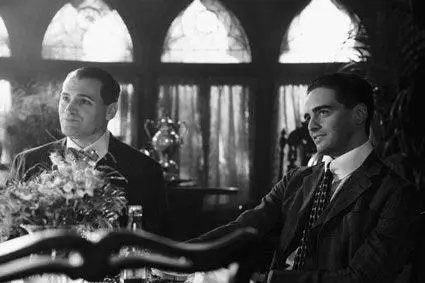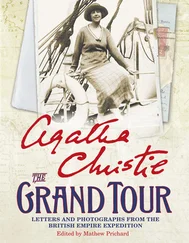Nelson Johnson - Boardwalk Empire - The Birth, High Times, and Corruption of Atlantic City
Здесь есть возможность читать онлайн «Nelson Johnson - Boardwalk Empire - The Birth, High Times, and Corruption of Atlantic City» весь текст электронной книги совершенно бесплатно (целиком полную версию без сокращений). В некоторых случаях можно слушать аудио, скачать через торрент в формате fb2 и присутствует краткое содержание. Жанр: Старинная литература, на английском языке. Описание произведения, (предисловие) а так же отзывы посетителей доступны на портале библиотеки ЛибКат.
- Название:Boardwalk Empire: The Birth, High Times, and Corruption of Atlantic City
- Автор:
- Жанр:
- Год:неизвестен
- ISBN:нет данных
- Рейтинг книги:5 / 5. Голосов: 1
-
Избранное:Добавить в избранное
- Отзывы:
-
Ваша оценка:
- 100
- 1
- 2
- 3
- 4
- 5
Boardwalk Empire: The Birth, High Times, and Corruption of Atlantic City: краткое содержание, описание и аннотация
Предлагаем к чтению аннотацию, описание, краткое содержание или предисловие (зависит от того, что написал сам автор книги «Boardwalk Empire: The Birth, High Times, and Corruption of Atlantic City»). Если вы не нашли необходимую информацию о книге — напишите в комментариях, мы постараемся отыскать её.
Boardwalk Empire: The Birth, High Times, and Corruption of Atlantic City — читать онлайн бесплатно полную книгу (весь текст) целиком
Ниже представлен текст книги, разбитый по страницам. Система сохранения места последней прочитанной страницы, позволяет с удобством читать онлайн бесплатно книгу «Boardwalk Empire: The Birth, High Times, and Corruption of Atlantic City», без необходимости каждый раз заново искать на чём Вы остановились. Поставьте закладку, и сможете в любой момент перейти на страницу, на которой закончили чтение.
Интервал:
Закладка:
Farley, Boyd, and Orman—it was the perfect relationship. Farley was the leader who went off to Trenton and dealt with the public at large. Boyd was the hatchet man, the political enforcer who kept the troops in line. Orman controlled the rackets and collected the protection money used to finance the organization. Boyd and Orman were Farley’s buffer and insulated him from anything that might send him to jail. Hap inherited Jimmy and Stumpy. He couldn’t have replaced them if he wanted to.
Farley’s relationship with Boyd and Orman gave him the opportunity to be a full-time legislator and public servant. Hap immersed himself in the problems of his town and never hesitated to use his power to promote Atlantic City’s interests. He was out in front on every issue affecting the resort’s economy. During the 30 years he served as state senator from Atlantic County, Hap Farley established a record of accomplishment that made him a legend in Trenton. His seniority, combined with his mastery of the legislative process, made him, for more than 25 years, an insurmountable reality with whom every governor had to contend when creating an agenda. Farley dominated the senate so thoroughly that it was political suicide to oppose him. The governors either dealt with Hap or saw their programs frustrated. To his disappointment, much of Farley’s effort as a legislator was directed at delaying the deterioration of his town. It was like trying to stop the tide. Atlantic City was a victim of post-war modernization and as its fortunes declined, so did Hap’s. Farley clung to power as long as he could and was ousted by a Democrat in 1971.
The several years following Farley’s departure were a desperate scramble to revive Atlantic City through casino gaming. The adoption of the Constitutional referendum in 1976 legalizing gambling in Atlantic City is a tribute to the resort’s long-time knack at promoting itself beyond its true worth. Gambling and the money it brought to the resort has breathed new life into a sorry town, and the climb back to national stature has begun. Regardless of how this experiment in urban renewal ultimately plays out, Atlantic City will remain a creature of the values that made it great the first time around.
1 
Jonathan Pitney’s Beach Village
Medicine wasn’t enough. He needed to be something more than a country doctor. Jonathan Pitney had been caring for the sick and injured for more than 30 years, and he was growing weary. A medical practice in 19th-century America wasn’t yet a path to wealth and prestige, and Pitney hungered for both. He knew he’d find neither caring for his patients.
Jonathan Pitney looked like a character out of a Dickens novel. Tall and lean, nearly always draped in a long black cape, Pitney’s piercing blue eyes and long thin hands were the first thing others noticed. His pale craggy skin, together with his large hooknose and high forehead crowned by flowing gray locks, made him a striking figure. Jonathan, the son of Shubal and Jane Pitney, was born in Mendham, New Jersey, on October 29, 1797. The Pitney family had arrived in this country circa 1700. As told to a biographer, Pitney’s great-grandfather and his brother had come from England to “enjoy civil and religious liberty, of which they were deprived at home.” They eventually settled in Morris County, New Jersey. After graduating from medical school at Columbia College in New York, Jonathan left his parents’ home in Mendham and headed south to the bayside Village of Absecon. He was 23 when he arrived in southern New Jersey, and he remained there the rest of his life.
There wasn’t much to New Jersey south of Trenton in 1820. During the two generations following the American Revolution, things had changed little. With the exception of the city of Camden along the Delaware River and the summer resort village of Cape May at the southern tip of the state, southern New Jersey was a vast pine forest. This pine wilderness was interrupted by narrow, sandy stagecoach roads that followed the footpaths of earlier residents, the Lenni Lenape. Sprinkled throughout this green expanse from the Delaware River and Bay to the Atlantic Ocean were tiny villages whose residents descended from the British Isles and Northern Europe. Their lives were centered on farming, fishing, and the manufacture of glass, bog iron, and charcoal. In time, these pioneers became known as “Pineys.” Absecon Village was part of that world and the place Jonathan Pitney chose to begin his medical practice.
Pitney was dedicated to his profession and worked tirelessly. He made rounds by horseback up and down the South Jersey coast to places a doctor had never been. Eleven years after his arrival, on April 21, 1831, Jonathan Pitney married Caroline Fowler, daughter of Rebecca Fowler, owner of the Sailor Boy Inn in Elwood, 15 miles west of Absecon and one of the many villages Jonathan Pitney visited. For years, Pitney was the only doctor many families knew and it was common for him to be called away from dinner or awakened in the middle of the night. Delivering babies, comforting the dying, stitching wounds, and setting broken bones from farming and fishing accidents made him well known throughout the region and loved by his patients. But his income was meager. Oftentimes he had no choice but to barter, and some say he relied upon his mother-in-law to get by. As the years piled up Pitney’s enthusiasm shrank, and he became as weather-beaten as his doctor’s bag.
Pitney wasn’t satisfied just being a doctor, and about 15 years into his medical career he took to politics. A Democrat in a region overwhelmingly Republican, Pitney had his own agenda and bucked the status quo. In 1837 he led the successful fight to have a new county, “Atlantic,” carved out of what was at the time Gloucester County. On the strength of that victory, Pitney was elected the first chairman of the new county government. He was also chosen Atlantic County’s representative to the State Constitutional Convention in 1844. In 1848 he ran for the U.S. House of Representatives. South Jersey wasn’t ready for a Democratic Congressman and Pitney lost, bringing his political career to a dead-end.
Political power beyond his grasp, Jonathan Pitney decided to reinvent himself—this time as an entrepreneur. His hopes lay with a sandy little island off the South Jersey coast.
Early in his career, Pitney crossed Absecon Bay in a rowboat to treat a patient at a site known as “Further Island.” Created by the tides and storms, this barrier island was a wild place dominated by sand dunes, marshes, and waterfowl. The Lenni Lenape had called this island “Absegami,” meaning “Little Sea Water.” Before the American colonists arrived, Absegami was a campground for the Native Americans who came to avoid the summer heat. Further Island was a desolate place with a handful of residents all from the same family, living in seven cottages scattered about the island. Aside from these solitary cabins, there were only “shanties for oystermen and fishermen, and a rude hostelry that served the purposes of the jolly fellows from Philadelphia, who came down in wagons to fish and shoot or to rough it.” Early Americans enjoyed Further Island much the same way as the Lenni Lenape.
The Lenni Lenape gave up their rights to all of South Jersey in exchange for finished goods such as woolen cloth, iron kettles, knives, hoes, and axes. The first record owner of the land comprising Further Island was Thomas Budd. He bought 15,000 acres on the north and south sides of the Great Egg Harbor River in 1678 from William Penn and a group of trustees of the Quakers. The Quakers had become owners of the land—together with the rest of South Jersey—in payment of a debt owed to them. Budd sold off his holdings to other settlers for sale prices of 4 cents per acre on Further Island and 40 cents-plus per acre for mainland property.
Читать дальшеИнтервал:
Закладка:
Похожие книги на «Boardwalk Empire: The Birth, High Times, and Corruption of Atlantic City»
Представляем Вашему вниманию похожие книги на «Boardwalk Empire: The Birth, High Times, and Corruption of Atlantic City» списком для выбора. Мы отобрали схожую по названию и смыслу литературу в надежде предоставить читателям больше вариантов отыскать новые, интересные, ещё непрочитанные произведения.
Обсуждение, отзывы о книге «Boardwalk Empire: The Birth, High Times, and Corruption of Atlantic City» и просто собственные мнения читателей. Оставьте ваши комментарии, напишите, что Вы думаете о произведении, его смысле или главных героях. Укажите что конкретно понравилось, а что нет, и почему Вы так считаете.












